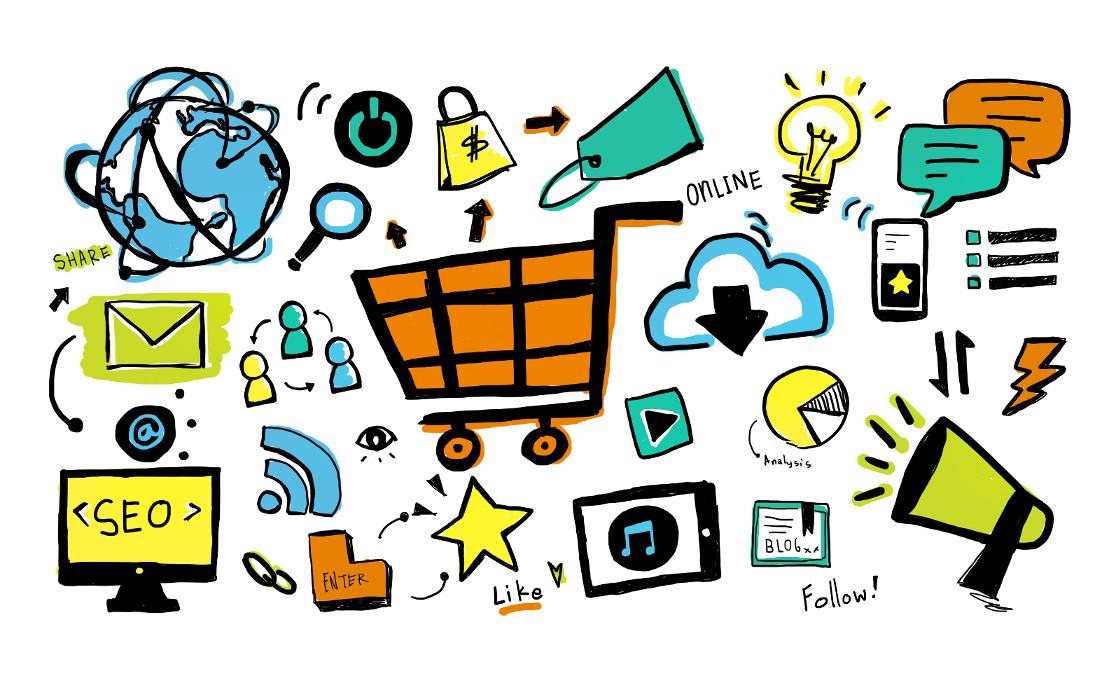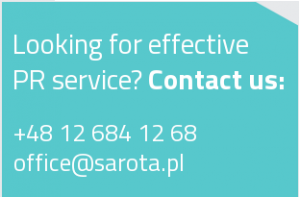What PR activities translate into sales results? This question is often asked by those commissioning public relations services. Many PR tools only have an indirect influence on the consumer’s decisions. However, there is a whole range of possibilities and principles whose use at the junction of PR, marketing and sales will result in faster increases in this key measure.
It is worth remembering that PR does not exist in a vacuum. Since often many people, or even departments, work on the individual elements of a communication project, their coordination and agreeing on a shared vision at an early stage will save everyone a lot of time and allow to obtain a better outcome.
From the product’s website, through a press release, video, press pack with information for reviewers, to advertisements, social media, products sheets in online stores, and, finally, the packaging and its content. This entire ecosystem should be as consistent in terms of message and style as possible.
The potential customer will be more eager to trust the brand which communicates in a consistent way across all channels, as it enhances the perception of professionalism and high standards.
PR can and should be engaged in the process of creating all the mentioned communication elements, including giving opinions on them and verifying them against the communication strategy. It can often play the role of a mediator between the sales and marketing departments. In its approach, it adopts the consumer’s perspective and makes the message more real. It asks difficult questions about purposefulness of individual ideas, analyzes their receipt by journalists and consumers, and adjusts communication at the target group level as well as channels used.
Let us now check this theory against a few practical principles.
1. A well-coordinated promotional campaign
PR and sales departments should be in touch with each other all the time. Regular internal exchange of statuses will allow PR professionals to, for example, prepare in advance the communication concerning a new promotional campaign (so carefully developed by salesmen) and considerably improve its outcomes.
Thanks to direct contact with the media and the community, PR professionals can and should provide salespeople with feedback on how their product is received by the market and whether, for example, it is adequately priced. A good information workflow will allow for faster introduction of adjustments, if any. Early identification of, for example, low product competitiveness on the local market may even save the brand from a wave of criticism.
PR professionals will try to obtain information. Their work will be a lot more effective, if they are informed of future plans, temporary discounts, major business partners, and goals. This will enable them to address the needs of sales by proposing custom activities combining the media, influencers, and stores.
Example: promotional campaign correlated with publications in the media and at influencers’
Price reductions are an excellent way to remind the world about our product. It is worth to ensure the right publicity for the campaign by organizing , in parallel, several major publications with tests or product placement. Where possible, one should ensure accurate links redirecting directly to the store with the current special offer. The goal is to shorten the purchase decision path.
PR professionals can engage in the communication with store representatives and jointly define the campaign’s communication conditions. They will make sure if the store has ready banners and other advertising materials. For bigger promotional campaigns, one should consider preparing a dedicated landing page on the store’s website. Quite often, larger merchants have social media channels with large reach, whose use will additionally enhance the offer’s visibility.
2. Timing matters
The timing of individual PR activities must be correlated with product availability. This will ensure the biggest possible impact of the communication on actual sales.
Unless you are a well-known, sought-after brand, which can afford a long run-up to the launch of sales, you should try to shorten the distance and communicate the product launch as close to shelf availability as possible, at least on key markets.
Intensification of PR efforts in a carefully selected period also applies to the weeks and months after product launch, e.g. around promotional campaigns. The lesson learned from the previous item should also be that, prior to launching any campaign, one should each time obtain feedback from salesmen whether product availability in the stores is high.
3. Social media and sales
Social media channels are often under the PR department’s control. Although today it is one of the most important communication areas of the brand, sometimes it is not appreciated in terms of direct translation into sales.
If the communication department has the brand’s fanpage on Facebook or an account on Twitter, informing about promotional campaigns in major stores is a natural, and even desired, content for fans (often being the dominant, if not the only, topic of the posts). In addition to the information in social media, one can use various incentives, e.g. discount codes published exclusively on the fanpage. Some part of the campaign’s budget can also be used for well-targeted and cost-effective Facebook ads. Good relations between the salesmen and individual stores will allow for implementing accurate campaign performance metrics (conversion pixels embedded in the store’s website).
A helpful and indirect role is also played by technical or customer support via social media channels. This clearly shortens the distance between the brand and the consumer, translates into building attraction and loyalty, and then into sales.
4. Measurable effects and benefiting from the data
The control over campaign communication can be used for implementing tools which accurately measure the campaign’s effectiveness. The conversion pixel should be embedded in the store, and any link redirecting to the product should be properly tagged in Google Analytics. The use of personalized, tagged links at each partner’s will enable accurate identification of traffic sources and quality. If possible, collecting leads should be ensured to use them in the future to attract interest in a new product or promotional campaign.
Monitoring the effects and assessing conversion effectiveness from the individual sources will enable more precise budget allocation and partner selection. Data-based metrics will be valuable when determining the potential of media as related to specific product categories, resulting in better market expertise. PR should also get to know the opinions of the community gathering under publications concerning the brand and analyze the tone of the comments.
It is also worth paying special attention to persistent, long-term sales results directly after the end of the price reduction. Monitoring the trends in media and consumer reactions to subsequent launches will allow for verifying the communication strategy.
PR outcomes are measurable. And yes – it does require effort. However, if good coordination with other departments of the company is established, and the right data is gathered at every stage of the communication, it will be easy to identify moments when public relations activities resulted in improving sales performance.
Follow us on LinkedIn.




